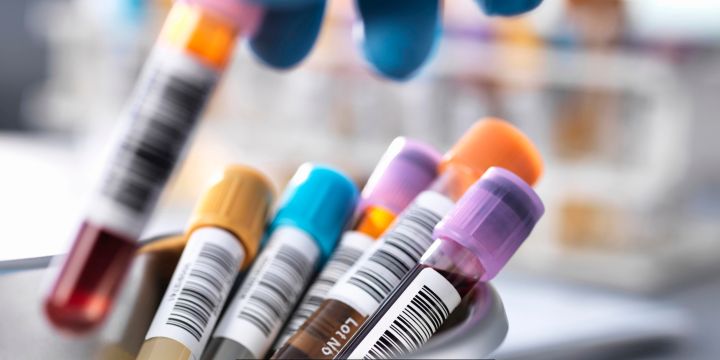Key Takeaways
- Informed consent underpins safe, ethical clinical research and protects every trial participant.
- Clear, ongoing communication is crucial so volunteers fully comprehend what their participation involves.
- Breakdowns in consent may put volunteers at risk and undermine the scientific value of research findings.
- Modern innovations, like digital tools and simplified language, are improving the experience for everyone involved.
- Oversight and participant engagement are shaping a more ethical and successful research environment.
What is Informed Consent in Clinical Trials?
Clinical research shapes the future of medicine, but taking part starts with one powerful agreement: truly informed consent. This central principle ensures that every person entering a study knows what they are signing up for, why the study matters, and their rights throughout the entire research process. For important clinical trials to occur, researchers must earn participants’ trust and respect, making consent a legal requirement and the bedrock of ethical research.
Unlike a simple signature on a form, informed consent turns the entire experience into a thoughtful dialogue. Researchers must lay out all study aspects, such as the goals, step-by-step procedures, potential side effects, and available alternatives, so that every volunteer can make an empowered, personal decision. The FDA highlights the ongoing nature of this agreement. It stresses that participants’ involvement is front and center from start to finish, and their right to withdraw remains fully protected. Embedding this process cultivates both safety and scientific integrity.
The Core Principles Behind Informed Consent
Informed consent is built upon a framework of three guiding ethical pillars. First comes respect for persons—an obligation to treat each individual as autonomous, capable of self-determination, and worthy of truthfulness. Next is beneficence, the commitment to mitigate risks and maximize potential benefits for participants, while always putting health and well-being first. Lastly, justice demands equitable access and the fair treatment of all, ensuring that research burdens and benefits are shared without discrimination or exploitation.
These principles have a profound impact on clinical studies. For example, respect means that a participant’s weighis given t as expert explanations. At the same time, beneficence is exercised when researchers use patient-friendly materials or adjust protocols to reduce hazards. Justice comes into play when studies consider the needs of diverse populations, ensuring representation and fairness across communities. Ultimately, this trio of values guides researchers in honoring the dignity of each participant.
Breaking Down the Process: Steps in Obtaining Consent
- Disclosure: Researchers communicate to the study’s participants what they can expect during each visit, the risks and uncertainties involved, and any possible benefits. Rather than lengthy, jargon-filled documents, effective dialogue happens in clear, everyday language and often involves multimedia materials or real-time conversations.
- Comprehension: For consent to be truly informed, participants must genuinely understand the information provided. Interactive approaches like teach-back—where an individual explains the study using their own words—help researchers verify that there are no gaps in knowledge. Supplementary diagrams or analogies can clarify complex concepts.
- Voluntariness: Consent must always be the participant’s free choice, not coercion or heavy-handed persuasion. Participants are reminded to choose not to take part or withdraw later, without facing judgment, penalties, or the loss of other care options.
- Documentation: A signature or digital confirmation formalizes the agreement, but it’s not the end of the process. Informed consent continues as long as the person is enrolled—updates, findings, and even changes in the study are promptly communicated so volunteers can reassess their commitment at any time.
Segmenting the process this way is about respect and accountability. Each step, done well, builds a clear foundation for trust between volunteers and the clinical trial team, helping to ensure both safety and genuine collaboration.
Challenges in the Real World: Gaps and Solutions
Despite its pivotal role, the informed consent process isn’t technical. It can feel overwhelming and even intimidating, especially to those unfamiliar with medical jargon. Research has repeatedly shown that, in many cases, up to half of trial participants walk away uncertain about what they have agreed to, raising both ethical and medical concerns.
The industry is moving towards solutions designed around the participant. Plain-language summaries, visual aids, and the opportunity for face-to-face discussions can help bridge comprehension gaps. Additionally, eConsent platforms make a tangible difference by offering flexible, digital access to study materials. These platforms let people read—and revisit—the information in their own time and environment, empowering them to ask more thoughtful questions and make more confident decisions.
The Role of Oversight: Regulations and Ethics Committees
Oversight from Institutional Review Boards (IRBs) and ethics committees ensures that clinical trial consent processes meet the highest standards. These groups thoroughly examine every clinical trial protocol and consent document, ensuring that all critical information is present, risks are outlined transparently, and participant safety is prioritized.
Committees are also responsible for ensuring the informed consent process addresses the needs of all intended participants, including those from underrepresented or vulnerable backgrounds. They refuse to give the green light to studies until these criteria are met. Such thoroughness protects each participant and lends scientific credibility to the results, creating a system built on mutual respect and responsibility.
Technological Advances: The Rise of Digital Consent
The revolution in digital health has transformed informed consent, giving participants greater freedom to understand study details and embrace their role in research. Interactive apps and video explanations break down barriers, while responsive eConsent platforms offer bite-sized, easy-to-understand information.
Electronic informed consent improves participant understanding and satisfaction with the research process. These tools let people navigate complicated information at their preferred speed, in private, and often in their language, advancing safety and ongoing engagement.
Looking Ahead: Empowering Research Participants
Informed consent is most potent when it empowers volunteers to become active contributors, not just passive subjects. Researchers build relationships rooted in honesty, respect, and transparency by cultivating open communication—from the first conversation to the last study visit.
Success in critical clinical trials is found where individuals feel seen and heard, are given every opportunity to understand, and are comfortable voicing questions or concerns. Research quality and participant retention improve when trials set high standards for consent, ultimately driving progress in treatment and care for society.
Making Informed Consent More Accessible
- Create materials using relatable stories and analogies to break down complex science.
- Provide translation and interpretation services, ensuring multilingual access for diverse participants.
- Establish clear, accessible lines of communication for ongoing participant questions or support.
- Regularly update and share new developments or safety findings as trials progress.
Every advancement in informed consent is a step towards more ethical, inclusive, and practical clinical research. Continuous improvement and participant-centered processes elevate trust in the system and drive positive outcomes for future generations.



